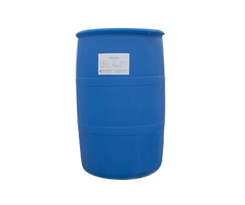In the textile industry, many dyeing and finishing auxiliaries often use the compound of alkyl glycosides. However, the combination of surfactants produces synergistic effects and synergistic effects, and there are functions that a single surfactant does not have. Therefore, the compounding technology and synergistic effect of surfactants, as well as the relationship between the surface characteristics and application properties after compounding, have become an important research direction in the field of printing and dyeing auxiliaries, and also an extremely important research content to improve the quality of printing and dyeing. At present, there is a big gap between the quality of printing and dyeing auxiliaries in China and foreign commodities. In addition to monotonous varieties, imperfect performance and insufficient development capacity, there is little research on the principle of surfactant compounding and its relationship with application performance, which needs to be strengthened to provide more theoretical guidance for product development and application.

Usually, disperse and vat dyes or pigments exist in the form of suspension dispersion in water. They are easy to be affected by various mechanical forces or high temperatures, so that these small particles collide to form secondary aggregate particles, and flocculation occurs, which makes the dispersion worse and causes uneven dyeing. Therefore, some dispersants are often added to these solutions to ensure that the dyes or pigments exist in a stable state without condensation, so as to maintain good dispersion performance. Among them, the dispersion of disperse dyes is more important in high temperature dyeing. At present, most of the high-temperature dispersants used are composed of anionic surfactants in a certain proportion, and their dispersion depends on the surface characteristics of dispersants, such as sulfonation degree, HLB, cloud point and so on.
APG is a product obtained by the loss of a molecule of water catalyzed by acid from the semiacetal hydroxyl group and fatty alcohol hydroxyl group of glucose. It has excellent surface tension. The low surface tension of general surfactants is 30mN/m~40mN/m, while the low surface tension of APG is lower than 30mN/m. It has better detergency and foam force, no cloud point, and emulsifying ability is superior to TX-10, Ping plus O, Twain -20 and plate -60, which can have better synergistic effect with its surfactants. Biodegradation experiments show that it can be completely degraded. All kinds of products have no carcinogenicity.
APG can be used as a refining agent for silk fiber to moderately remove fibroin and obtain the unique softness, flash and good dyeing of silk. In addition, it is reported that cotton cloth is in C12 ~ C16 apg1 After soaking in 25%, 1.25% melamine resin and 97.5% methanol solution for 30min, remove the liquid and bake in 150 ℃ oven for 30s. The dry and wet wrinkle resistance of the cloth is increased by 50%.
The ratio of APG and quaternary ammonium ester is 10 ~ 1, which can be used as antistatic agent. According to the U.S. patent report, 117 ~ 8 parts of C8 ~ 22 fatty amines mixed with 1 part of APG can give the fabric a certain softness and prevent it from coking. APG is mixed with alkyl sulfate and can be used as penetrant in fiber mercerization pretreatment. 6%~94% APG and 6%~94% alkoxylated alcohols, 6%, 94% Chloroethoxy isodecyl alcohol (foam inhibitor) and water mixture are used for fabric washing and bleaching, so that the fabric has excellent whiteness. The mixture has the characteristics of stable at high temperature, little foam under high stirring and good biodegradability.